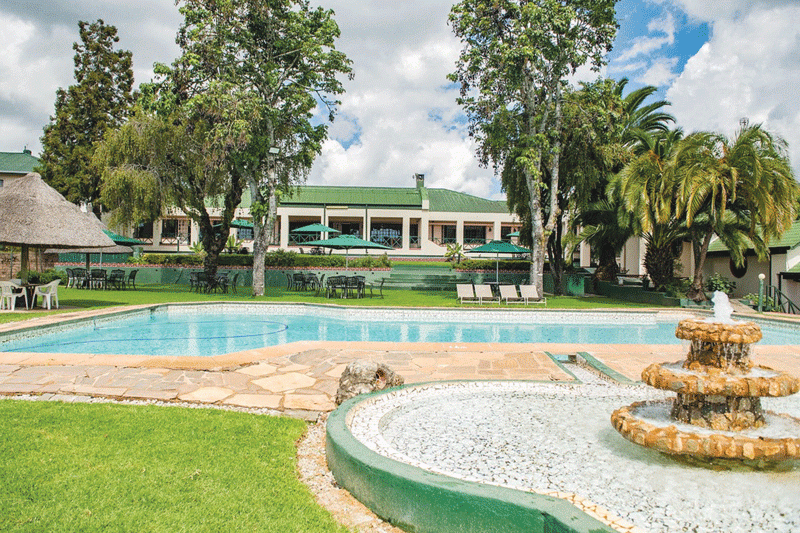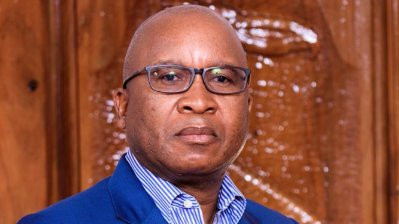
FOREIGN reserve assets are foreign currencies and other commodities held by central banks as a means to support economic growth and continuity within an economy.
They comprise bank notes, foreign bank deposits, foreign Treasury bills and bonds, International Monetary Fund (IMF) Special Drawing Rights (SDRs) and reserve positions, gold and other commodities.
For clarity, SDRs can be viewed as a generosity of the IMF, which are issued to all its member countries for free, mostly in times of severe crises.
Zimbabwe last-received SDRs worth US$958 million in 2021, as a means to assist the country after the Covid-19 economic downturn. SDRs are only repaid if a country decides to leave the IMF.
On the other hand, IMF reserve positions are made up of annual membership subscriptions paid by each country to the organisation, each year.
Once more, in a time of crisis each country can request its past annual subscriptions and use them as it deems fit, without any interest charged.
Gold and other commodities, which can easily be liquidated (sold) in exchange for foreign currency on international markets can also be accumulated by central banks as part of their reserves.
At the end of 2022, China, Japan and Switzerland had the most foreign reserves, which were valued at US$3,2 trillion, US$1,2 trillion and US$863 billion, respectively.
- Village Rhapsody: How Zimbabwe can improve governance
- Village Rhapsody: Engage men to end gender-based violence
- Village Rhapsody: How Zimbabwe can improve governance
- Zim maize output to drops by 43%
Keep Reading
How Zimbabwe acquires its reserves
It is crucial to describe how central banks acquire foreign reserves, before presenting the odd situation, which Zimbabwe is facing. In 2021, Zimbabwe generated foreign exchange through exports (US$6,4 billion), development aid (US$1,1 billion), foreign direct investments (US$166 million) and remittances (US$1,6 billion).
Around 75% of export income was given to the exporting companies in foreign currency, whilst the other 25% was issued to them in Zimbabwe dollars by the Reserve Bank of Zimbabwe (RBZ).
Thus, the RBZ took the 25% foreign currency from exporters, which then became part of the bank's foreign reserves. This is the typical manner in which foreign reserves are created anywhere in the world.
Therefore, a strong export-oriented economy means that a country can have robust foreign reserve assets. It can be that simple. In neighbouring South Africa, all exporters and recipients of funds from abroad are given 100% local currency (with a few exceptions), whilst the South African Reserve Bank (SARB) takes all the foreign currency.
Later in the article, it will be outlined why the RBZ cannot justifiably emulate the SARB and what it needs to do if it were to copy its counterpart.
A portion of foreign direct investment and development aid will also end up at the RBZ and be exchanged for domestic currency. However, in Zimbabwe, remittances are unlikely to be part of the bank's foreign reserves.
Since the RBZ has limited access to foreign reserves, the bank resorts to borrowing, sometimes. By the end of 2021, the RBZ had borrowed over US$1,8 billion, to fulfil its need for reserves.
Uses
Once acquired, foreign exchange reserves can be used for various national objectives.
They are mostly used to facilitate imports through supplying importers with the essential foreign currency for enabling purchases in foreign countries.
This is how some Zimbabwean importers access foreign exchange at the weekly RBZ auctions. According to official records, a total of US$1,97 billion was issued to importers, through the auction, in 2021. Other importers use the parallel market as the RBZ cannot satisfy their demand.
It is crucial to state that, in a normal economy, when importers cannot access funds through the formal banking channels, they will resort to the parallel market, which typically implies that the domestic currency will lose value (depreciate).
Foreign reserves are also used to prevent the domestic currency from depreciating due to political instability and speculative activity in the economy.
When market participants begin to demand increasing amounts of foreign exchange, it is the duty of the central bank to release some of its foreign reserves in order to add the supply of forex in the market, so that the domestic currency does not depreciate acutely.
Such responses can work when the changes in demand are temporary. If the changes are longer and long-term in their nature, then using central bank foreign reserves will not be able to stop the domestic currency from losing value.
Reserves are also used to enable the country to respond to various global crises. These include, global recessions (such as that of 2007- 2008), depressed commodity prices, pandemics (such as covid-19), geopolitical tensions (such as Russia-Ukraine war), etc.
When such global challenges arise, Zimbabwe can expect to have depressed foreign investment, lack of foreign credit, lower government revenue, less forex for importers and reduced demand for exports.
Thus, in order to avoid complications arising from such problems, the RBZ is expected to use its foreign reserves to attend to the challenges.
For example, in times of global crises, local industries in dire need of foreign credit for their continuation, can find a lender in the RBZ, when all else fails, in the international markets.
Since the Ministry of Finance does not have significant foreign assets which are capable of generating revenue, it will need US dollars from the RBZ in order to make repayments on the government’s external debts.
Depending on circumstances, the independence of the central bank and accounting methods applied, the foreign reserves can be received in exchange for Zimbabwe dollars in the government's bank accounts, as a loan or for free. If the RBZ fails to provide the foreign exchange then the country may end up defaulting on its debt repayments.
Reserves can also be kept as a means of response to unforeseen national disasters, which may include cyclones, tropical storms, floods, earthquakes, extreme droughts, etc.
When a country experiences such tragedies, it will naturally be in need of funds to address the losses and damages from the natural phenomena.
When reserves are significant, the excess can be used to make investments in less-liquid assets. This is typically done through a Sovereign Wealth Fund (SWF). The SWF can use the extra finances to invest in domestic or international infrastructure developments, stock exchange, real estate or energy, etc.
The oddity of Zimbabwe
Zimbabwe finds itself in a peculiar position where the central bank does not have foreign exchange reserves. Rather, reserve assets are mostly in the hands of the average person in the street and private firms.
The country is reported to have between US$3 billion-US$7 billion circulating within its informal sector. In percentage form, this translates to between 15%- 35% of GDP.
It is crucial to interrogate why average Zimbabweans have resorted to becoming custodians of foreign reserves. A comparison of the inflation figures of South Africa, China and Zimbabwe may betray one of the key reasons for this.
In May 2023, South Africa, China and Zimbabwe had annual inflation rates (CPI) of 6,3%, 0,2% and 175% (official rate), respectively. To add to that, Zimbabwe's unofficial inflation figure for the same period was calculated at a massive 1298%.
If the RBZ fails to conclusively deal with inflation, then it is expected that households and businesses will continue undermining the local currency.
A look at the official exchange rates of the three countries (South Africa, China and Zimbabwe) between January and May, this year, also shows another reason why ordinary Zimbabweans are now keeping foreign reserves in their homes and safes.
In January, the exchange rates against the dollar, for South Africa, China and Zimbabwe's currencies were R17,4, ¥ 6,75 and ZW$796 (official rate), respectively.
By the end of May the rates had become R19,03, ¥7,08 and ZW$1 989, respectively. Once more, this points to a need for the RBZ to execute its foundational role of defending the local currency, without which, the general public will continue to also undermine it.
The US$3-US$7 billion circulating in the informal sector has much greater economic potential if it were to be channelled into the formal sector.
Firstly, using the credit-multiplier methodology, the US$3 billion can create additional banking deposits worth US$15 billion, to the local banking sector.
With statutory reserve requirements at 15% and 5% for demand and time deposits, respectively, the funds can multiply by five times (or more), if converted to local currency and made part of the domestic financial system.
Through credit creation, the funds will grow exponentially. It is noteworthy to state that this estimation assumes that the public would surrender their US dollars to the RBZ and fetch local currency in return.
In such a situation, the RBZ would take the dollars and add them to the country's foreign reserves.
Secondly, when the funds start circulating in the formal sector as Zimbabwe dollars, the government will have access to more opportunities of taxing the public and earning from their transactions.
Currently, the IMTT is earning around 6% of government revenue. The Treasury's budget will resultantly move from its consistent unimpressive US$4 billion value to around US$8 billion, when informal sector funds are incorporated into the formal system.
Thirdly, as the US$3 billion is added to the country's foreign reserves, it can then be used for various national objectives, as outlined before. Others may wonder how it is that US dollars can be exchanged for local currency.
This can be explained by simply stating that money has no intrinsic value, whether US dollars or rands or the local currency. Rather, money acts as a token, an invoice for goods and services produced by an individual or entity.
In other words, money acts as proof that goods or services were produced. However, in order to make the exchange of foreign currencies for Zimbabwe dollar fair, there is need to ensure that inflation and exchange rate stability is similar between Zimbabwe and other strong economies.
Simply put, if the RBZ would retain annual inflation below 5% and maintain a stable exchange rate, the public would not have a justification to perform the other mandate of the reserve bank, which is to act as the custodian of the nation's foreign reserves.
- Tutani is a political economy analyst. — [email protected]











